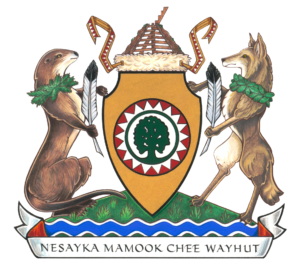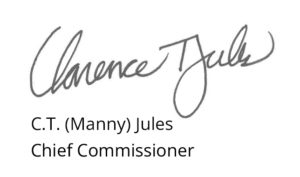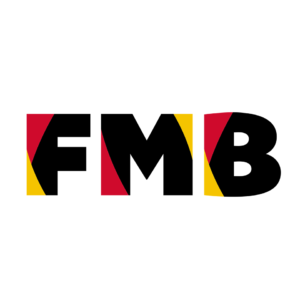
Statement by Chief Commissioner C.T. (Manny) Jules
Regarding the First Nations Resource Charge
January 30, 2023
Since 2012, the First Nations Tax Commission and interested First Nations have been working on a proposal for a First Nation Resource Charge (FNRC). This proposal supports their fiscal jurisdiction over resource projects on their lands.
Receiving a share of the fiscal benefits from the use of ancestral land and the resources on it has been a priority for First Nations since confederation. Between 1867 and 1930, First Nations were systematically legislated out of the Canadian federation and economy. All First Nation government powers, including the ability to raise revenues to finance those powers, were removed and distributed between the federal and provincial governments. This has caused ongoing First Nation dependency, poverty, and service quality disparity.
Since the 1970s, multiple court decisions have led to the recognition that First Nations have an inherent right to revenue generated by using land and resources in their jurisdiction. However, there is no clarity about how to distribute fiscal benefits among governments and economic benefits among individuals while also paying for environmental costs. As a result, individual negotiations are needed for every project. This process significantly burdens First Nation administrations and makes negotiations costly, laborious, and time-consuming. The FNRC is an important step toward clearly defining First Nation fiscal benefits, which leads to more transparent agreements and successful outcomes.
This First Nation-led initiative will support their governments in receiving direct, secure, and stable fiscal revenues from resource projects on their lands, just like other governments.
We will continue to work with interested First Nations on the design and development of this (the FNRC) proposal. In the coming months, we will convene a meeting of interested First Nations to provide an overview of the proposal, identify legislative requirements for its implementation, develop the next steps, and seek input and support.

WHAT IS
THE FNRC?
It is a First Nation-led proposal that would provide First Nations the option to implement a pre-specified charge regime based on land use and resources in their territory or ancestral lands. The charge system would be established in First Nation law. There will be distinct charges for each resource project type, which would be standardized throughout a province or possibly the country. For example, there would be distinct charge rates and bases for mining, pipelines, forestry and other eligible projects.
WHY A FIRST NATIONS RESOURCE CHARGE?
FIRST NATIONS LEGISLATED OUT OF ECONOMY
Between 1867 and 1930, First Nations were systematically legislated out of the Canadian federation and economy. First Nation government powers were removed, and resource extraction proceeded largely without consultation or compensation. First Nation tax collection powers were removed, resulting in a lack of means to pursue their title claims, improve community infrastructure, care for their members and implement their jurisdictions. This has led to First Nation dependency, poverty, and a notable difference in the quality of services received compared to other Canadians.
FIRST NATIONS RIGHTS ARE RECOGNIZED
Almost a century later, in the 1970s, Supreme Court decisions like Calder, Delgamuukw, Haisla, Tsilhqot’in and Robinson-Huron recognized First Nation rights and title within ancestral lands and the duty of other governments to accommodate this. This recognition led to the recent practice of seeking First Nation consent for developments through negotiated arrangements. These agreements were sometimes with resource developers and sometimes with provinces and territories. They often included negotiating various forms of financial compensation in benefit and resource revenue-sharing agreements. This created First Nations fiscal benefits, but it was not an efficient process to implement them.
PATH TO ECONOMIC RECONCILIATION
The FNRC is an important step toward economic reconciliation. It restores the long-ignored right of First Nations to share the revenues generated by resource development. It creates revenues that can be used to help First Nations take better advantage of resulting job and business opportunities. It will provide these revenues under conditions that will free First Nations from funding conditions and that are consistent with the right to self-determination, which is called for by UNDRIP.
WHO BENEFITS FROM THE FNRC?
FIRST NATIONS
The FNRC will practically implement First Nation fiscal jurisdiction on ancestral lands. As a result, it will generate significant and stable revenues for First Nation governments. This means that communities will have more revenue to contribute to self-determination, better infrastructure, public services and the implementation of other jurisdictions. It will reduce the substantial demands that project proposals place on First Nation administrations. It will help raise the quality of First Nation public service and infrastructure to national standards.
RESOURCE SECTOR (INDUSTRY)
It is proposed that if a company pays an FNRC, it will be afforded federal tax relief roughly equivalent in value, either through a tax credit or other mechanism. In this way, the federal government will cede tax room to First Nations.
The net effect of tax coordination will be:
- No First Nation will be disadvantaged by having a higher effective rate of taxation on its lands
- No company will face a higher effective rate of taxation as a result of the FNRC
Tax coordination ensures the FNRC will be a government-to-government arrangement to implement rights and title. It does not simply put that obligation on First Nations and resource companies.
The development of the FNRC will also:
- Streamline consent negotiations
- Ensure greater transparency for stakeholders the public
- Provide a platform for improving the economic and environmental components of agreements
- Reduce the requirements for ongoing contract management by companies
BENEFITS FOR GOVERNMENTS
Negotiating individual fiscal arrangements for each First Nation on each project is too uncertain, takes too long, costs too much, and results in a series of one-off agreements that undermine tax integrity. As a result, it is costing the Canadian economy billions in lost investment and costing Canadian governments billions in lost tax revenue.
The proposed FNRC will simplify and standardize the resource project investment process to encourage more successful investment and bring greater integrity to tax systems. It would address overlapping land claim concerns as well as economic reconciliation. Improved First Nation economies support self-determination.
RESOURCE INVESTMENT CLIMATE
The FNRC proposal would improve Canada’s resource investment climate and promote economic reconciliation. The FNRC would replace individual negotiation processes on the fiscal components of consent agreements between First Nations, resource developers and provincial governments through a standardized charge system.
These draft principles are for discussion purposes to inform the development of a policy framework for the First Nations Resource Charge.
- The FNRC will always be optional for First Nations.
- First Nations have an inherent right to the fiscal benefits generated by the use of their land and resources as recognized by various court judgements.
- The FNRC is a part of new fiscal relationship that supports the implementation of First Nation jurisdictions.
- The FNRC would be based in First Nation law.
- The design and implementation of the FNRC will continue to be led by interested First Nations and supported by the FMA institutions. The institutions would support implementing the FNRC in the same way they support other FMA fiscal powers.
KEY COMPONENTS
- The FNRC must be supported by tax coordination with other governments so that it does not impose additional costs.
- The FNRC could replace other mechanisms for pricing the use of First Nation land and resources.
- Participating First Nations would apply standardized rates to a standardized base for all resource project types of the same kind. This consistency could be throughout a province or possibly the country.
- The FNRC would not imply First Nation project consent. Participating First Nations would still have to assess proposed economic benefits and environmental impacts.
FAQ






